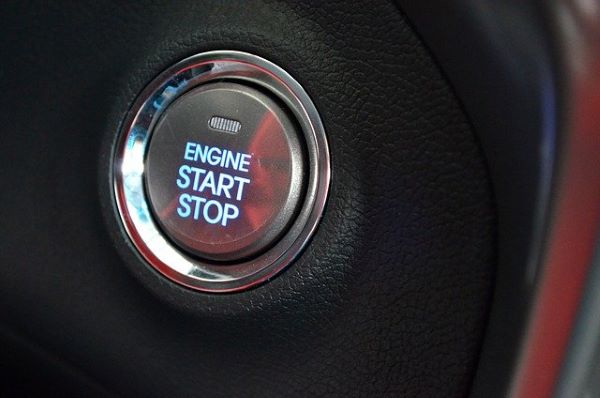We’ve all dealt with the dead car battery, leaving us with a car that won’t start. But, what does it mean when your car won’t start, but lights come on? Clearly, the car battery probably isn’t drained in this circumstance. With so many other systems that could be to blame, it’s helpful to go through some troubleshooting to figure out why the car won’t turn over.

In this guide, we will discuss the reasons why the car struggles to start. We will also provide some helpful tips to get you back on the road.
Table of Contents
Car Won’t Turn Over: Top Reasons Explained
1. Car Battery Issues
If the car won’t start, but the lights come on, you probably ruled out the automotive battery, but you shouldn’t yet. Just because some electrical aspects are working doesn’t mean that the battery is definitely in optimal condition.
The battery could have a reduced charge, causing a no start, no crank condition. The electronics, including the radio and headlights, don’t always need a lot of juice to run. In some cases, they will run normally even when the battery is dying. On the other hand, the power needed to start the engine is quite high. If the battery has a low charge, the car won’t turn over.
With a voltmeter, you can test the charge of the battery. Many auto parts stores will also check the battery health for free. If the charge seems good, take a closer look at the battery connections. It’s possible that the connections are loose or corroded, which would cause issues.
If you have a new battery, but the car won’t start without a jump, you might have a bad alternator. The car alternator is responsible for charging the battery while the engine is running. It also ensures that the electronics work the way they were intended.
Here’s a simple guide showing you how to test your car’s alternator.
2. Faulty Ignition Switch
If the car struggles to start but runs fine, you might have a bad ignition switch. As the switch starts to fail, it can work intermittently, leaving you to wonder what the problem is. However, it can also fail completely, rendering it impossible to start the vehicle at all or leading to a stalling situation.
Even still, as the ignition switch fails, it can get stuck in the ON position, sending constant signals to the fuel pump and wearing out the relay. Unfortunately, diagnosing the ignition switch can be slightly more complicated than checking the battery, especially if the problems are intermittent.
You will want to use a test light and follow the steps in this video.
3. Failing Starter
If you have to turn the key multiple times to start the car, it’s possible that the starter is failing. Generally, this problem also comes with a tell-tale clicking noise. As the starter fails, you could have a car that won’t start, but the lights come on. On the other hand, you might have a car that starts but stays stuck on, leading to a grinding noise.
Starters fail because of oil leaks or damage. It could also have a bad connection or corrosion could have led to wear. If the starter still has some life in it, you might be able to tap on it. Here’s an example of how to start a car with a bad starter.
However, you must be careful that you don’t bang on it too hard. After all, you want to start the engine, not render the starter completely unusable.
4. Loose Ground Connection
If it seems that the car is completely dead with no power, the ground connection could be to blame. Bad grounds can cause any number of problems, including allowing circuits to open when they shouldn’t. Because of this malfunction, you might notice these symptoms along with a no-start situation.
- Dimming or flickering lights
- Electrical accessories working erratically
- Slipping AC compressor clutch
- Intermittent sensor failure
- Radio interference
The ground connection can become compromised due to rusted or damaged wires, corrosion or poor installation during a repair. To check the engine ground, you want to follow these steps.
- Disable the ignition system. With a distributor, you need to disconnect the cable from the distributor cap and ground it to the engine with a jumper wire. All other systems allow you to remove the fuel pump fuse.
- Set your multimeter to DC and choose a range slightly greater than the battery voltage. Ideally, you would choose 20 volts.
- Connect the red lead from the meter to a clean spot on the engine.
- Connect the black lead from the meter to the battery’s negative post.
- Have a helper start the engine, cranking it for five seconds. This should provide enough time to get a reading.
- The voltage should be 0.2V or less. If it is any higher, there is unwanted resistance to the ground.
For more assistance finding a faulty engine ground, reference this helpful video.
5. Fuel System Trouble
If the car won’t start after sitting, it’s possible there is an issue with the fuel system. For starters, are you sure there’s enough fuel in the tank? You wouldn’t believe how many people run out of gas, leading to a no-start situation. If this is the case, some fuel will change your entire circumstance.
If there is plenty of fuel, the problem could be due to a clogged or defective fuel filter. It’s important to replace the fuel filter regularly as part of the recommended service schedule. You can find this information in your owner’s manual, but most people change the fuel filter every 20,000 to 60,000 miles, depending on what kind of vehicle it is. To prevent a clogged fuel filter, make sure you always have at least a ¼ tank of fuel and opt for top-tier gas stations.
If the car is slow to turn over when starting, you might also have a problem with the spark, which isn’t necessarily due to the fuel system. However, the spark is needed to ignite the fuel, allowing the engine to start. If the car has trouble starting after being driven, it could also be due to the spark plugs or wires. In fact, this is a common failure that shows itself when the engine is hot.
To learn more about the fuel system and for steps to diagnose the problem, watch this video.
Troubleshooting the Car That Won’t Start
Now that you understand the various parts that could be causing an issue let’s work through how to find the problem.
- Make sure you have the right key to start the car.
- Ensure there is enough fuel in the tank.
- Attempt to jump-start the battery.
- Check the oil levels. If the car ran low on oil, the engine might be seized.
- Test the ignition switch with our instructions above.
- Test the starter with our instructions above.
- Look for a loose or faulty ground connection.
- Troubleshoot fuel system issues.

Get Your Car on the Road: Steps to Take
Based on what happens when you turn the key, here are some tips that might help you get the car moving.
Car Won’t Start, Just Clicks
If the car makes a clicking sound when you try to start it, it’s probably caused by a bad starter motor. However, it could also be a weak battery or poor battery connections. Here are a few tips.
- Try cycling the key. If the battery is weak, you might be able to bump the starter enough to get it going. Turn the key on and off quickly a few times in a row. Wait a few minutes and try to start the engine again.
- Check the battery terminals. If they are corroded and you are on the road, you won’t be able to clean them right now. However, you might be able to move them around enough to make better contact temporarily. Try starting the engine again.
- If you can get access to the starter motor, try to smack it with a blunt object. If there is a little life left in the starter, this might provide enough force to get you home.
Car Won’t Start with No Clicking
If you turn the key and nothing happens, you might have a different issue. Try these tips to get back on the road.
- Check your key to make sure it is correct. If you are using a proximity key, it’s possible that there is something wrong with it.
- Put your foot on the brake and move the shifter to neutral. Try to start the engine again. Sometimes, moving the shifter can reestablish the electrical connection with the transmission range selector, allowing you to start the engine.
Car Won’t Start, Engine Cranks
If the car engine is cranking, but it can’t get moving, try these tips instead.
- Try swapping relays. If you turn the key on and don’t hear a short buzzing sound, it’s possible that the fuel pump relay has gone bad. Normally, the buzzing sound indicates that the fuel pump is priming the injection system. To determine if the relay is bad, you want to first locate it according to the service manual. Pull the fuel pump relay out and replace it with one that’s the same part number. Try starting the engine again.
- Take the heel of your shoe and try to hit the bottom of the fuel tank. This might provide enough force to jump-start the motor in the fuel pump. Try starting the vehicle again.
- If you are smelling fuel, it’s possible that you have flooded the engine. Push the gas pedal down to the floor and hold it while you crank the engine.
- In some cases, the problem could be due to a faulty sensor or a vacuum leak. With some vehicles, it’s possible to trick the sensor into providing a better air/fuel ratio. While starting the engine, push the gas pedal halfway to the floor, telling the computer to add more fuel into the system.
FAQs
What are the signs of a bad alternator?
When the alternator is dying, you might notice dim or bright lights. The battery can also die because it can’t be charged while the engine is running. Over time, the accessories may also start acting up.
How do you tell if it’s your starter or ignition switch?
Typically, when the ignition switch is bad, you won’t hear any noise when trying to start the car. However, a bad starter can still activate the solenoid, leading to a clicking sound when you try to crank the engine.
How long does a car battery last?
Most car batteries will last between three and five years. However, if you don’t drive long distances and you don’t keep the battery charged, it could fail prematurely.
Final Thoughts
When the car won’t start, but the lights come on, you might have a sinking feeling overwhelm you. However, if you take a deep breath and do a little troubleshooting, you could find that the problem isn’t nearly as bad as you thought.
